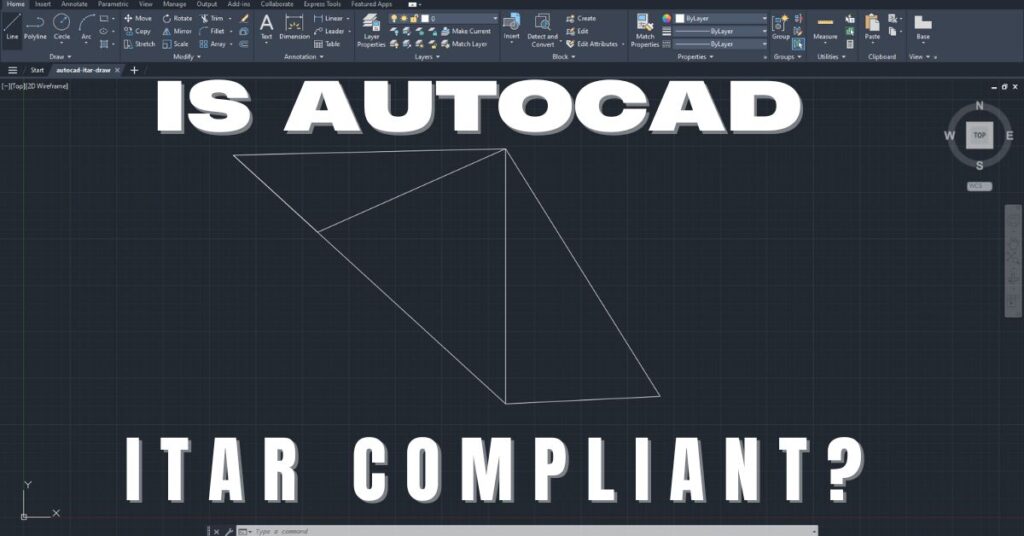What is NIST CSF?
The National Institute of Standards and Technology (NIST) Cybersecurity Framework (CSF) is a comprehensive set of guidelines and best practices designed to help organizations manage and reduce cybersecurity risks. Developed by NIST under the direction of the U.S. government, the framework provides a structured approach to identifying, assessing, and mitigating cybersecurity threats, ensuring that critical infrastructure and other key assets are protected.
NIST CSF has become a widely adopted tool across various industries, especially among those that interact with federal entities. It’s particularly relevant for defense contractors, financial institutions, healthcare providers, and energy companies, where the protection of sensitive data is paramount. This article delves into the essential components of NIST CSF, its importance, and how organizations can effectively implement it to bolster their cybersecurity posture.
The Structure of NIST CSF
NIST CSF is organized into three main components: the Framework Core, the Implementation Tiers, and the Framework Profiles. Each of these components serves a specific purpose in helping organizations understand and manage cybersecurity risks.
Framework Core
The Framework Core is the heart of NIST CSF. It provides a set of activities, outcomes, and references that are common across critical infrastructure sectors. The Core is divided into five concurrent and continuous Functions:
-
Identify: Develop an organizational understanding to manage cybersecurity risks to systems, people, assets, data, and capabilities. This includes asset management, business environment, governance, risk assessment, and risk management strategy.
-
Protect: Implement appropriate safeguards to ensure the delivery of critical infrastructure services. This function encompasses access control, awareness and training, data security, information protection processes and procedures, maintenance, and protective technology.
-
Detect: Develop and implement appropriate activities to identify the occurrence of a cybersecurity event. Key areas include anomalies and events, continuous security monitoring, and detection processes.
-
Respond: Develop and implement appropriate activities to take action regarding a detected cybersecurity incident. This involves response planning, communications, analysis, mitigation, and improvements.
-
Recover: Develop and implement appropriate activities to maintain resilience and restore any capabilities or services that were impaired due to a cybersecurity incident. Recovery planning, improvements, and communications are critical here.
Each Function is further broken down into Categories and Subcategories, which provide specific outcomes that organizations should strive to achieve. For instance, under the “Identify” Function, there is a Category for “Asset Management” which includes Subcategories related to identifying and managing hardware, software, and data within the organization.
Implementation Tiers
The Implementation Tiers component of NIST CSF helps organizations understand the degree to which their cybersecurity risk management practices exhibit the characteristics defined in the Framework. There are four Tiers:
Tier 1: Partial – Risk management practices are not formalized, and risk management is performed ad hoc.
-
Tier 2: Risk Informed – Risk management practices are approved by management, but there is no organization-wide policy or strategy.
-
Tier 3: Repeatable – The organization has a formalized risk management process, which is regularly updated based on changes in technology, threat landscape, or business environment.
-
Tier 4: Adaptive – The organization adapts its cybersecurity practices based on lessons learned and predictive indicators derived from past events.
The Tiers do not represent maturity levels but rather a range of practices that can help organizations determine where they stand in their cybersecurity risk management journey. They are also useful in setting goals for improvement.
Framework Profiles
Framework Profiles are essentially a customization of the Core functions, Categories, and Subcategories that reflect the organization’s business needs, risk tolerance, and resources. A Profile represents the alignment between the Framework and the organization’s actual risk management practices.
There are typically two types of Profiles:
Current Profile: This outlines the organization’s current cybersecurity state, detailing how it manages its risks at present.
-
Target Profile: This sets out the desired state of cybersecurity that the organization aims to achieve, based on its risk management goals.
The gap between the Current and Target Profiles helps organizations identify areas of improvement, guiding them in prioritizing resources and actions to enhance their cybersecurity posture.
Why NIST CSF Matters
NIST CSF is not just another set of guidelines; it has a profound impact on how organizations approach cybersecurity. There are several reasons why NIST CSF is crucial for organizations, particularly those in critical industries:
Government Endorsement: NIST CSF is backed by the U.S. government, making it a highly credible framework. It’s widely accepted across various federal agencies and has been integrated into regulations and policies that affect contractors working with the Department of Defense (DoD), such as the Cybersecurity Maturity Model Certification (CMMC).
Versatility: NIST CSF is designed to be flexible and scalable, meaning it can be tailored to suit the needs of organizations of all sizes and industries. Whether a small business or a large multinational corporation, the framework can be adapted to meet specific cybersecurity needs.
Focus on Risk Management: The core of NIST CSF is about managing cybersecurity risks rather than simply implementing a set of controls. This risk-based approach ensures that organizations prioritize their efforts on areas that pose the greatest threat, thus optimizing the use of resources.
Alignment with Other Standards: NIST CSF is designed to work in harmony with other existing standards and regulations, such as NIST SP 800-53, ISO/IEC 27001, and the General Data Protection Regulation (GDPR). This makes it easier for organizations to integrate NIST CSF into their existing compliance frameworks.
Continuous Improvement: NIST CSF encourages organizations to continuously assess and improve their cybersecurity practices. This iterative process ensures that organizations stay ahead of evolving threats and maintain a robust security posture over time.
How to Implement NIST CSF
Implementing NIST CSF can seem daunting, but with a structured approach, organizations can effectively integrate the framework into their operations. Here are some key steps to consider:
1. Assess Current Cybersecurity Practices
The first step in implementing NIST CSF is to conduct a thorough assessment of your current cybersecurity practices. This involves evaluating your existing policies, procedures, and technologies against the framework’s Core functions and categories.
By doing so, you’ll be able to identify any gaps or weaknesses in your current approach. This assessment should also include an analysis of your organization’s risk tolerance and the specific threats it faces.
2. Define a Target Profile
Once you have a clear understanding of your current cybersecurity posture, the next step is to define a Target Profile. This Profile should reflect the desired state of your cybersecurity practices, based on your organization’s goals, risk tolerance, and regulatory requirements.
The Target Profile will serve as a roadmap for your cybersecurity efforts, guiding you in prioritizing actions and resources.
3. Develop a Plan of Action
With your Target Profile in place, it’s time to develop a plan of action. This plan should outline the specific steps you need to take to move from your Current Profile to your Target Profile.
This could include implementing new security controls, updating existing policies, or investing in new technologies. The plan should also include timelines, milestones, and metrics to measure progress.
4. Implement the Plan
Implementation is where the rubber meets the road. This step involves executing the plan of action, making the necessary changes to your cybersecurity practices, and integrating NIST CSF into your daily operations.
This process may require significant effort, particularly if it involves overhauling existing systems or processes. However, the benefits of a more robust cybersecurity posture far outweigh the challenges.
5. Monitor and Update
Cybersecurity is a dynamic field, with new threats emerging constantly. Therefore, it’s essential to continuously monitor your cybersecurity practices and update them as needed.
Regularly review your progress towards your Target Profile, and adjust your plan of action based on changes in your business environment, threat landscape, or regulatory requirements.
The NIST CSF encourages a cycle of continuous improvement, ensuring that your organization remains resilient in the face of evolving threats.
NIST CSF and Defense Contractors
For defense contractors, adhering to NIST CSF is not just a best practice—it’s a requirement. The DoD has made it clear that contractors must implement robust cybersecurity measures to protect Controlled Unclassified Information (CUI) and other sensitive data.
NIST CSF provides a framework for contractors to achieve compliance with DFARS 252.204-7012 and the Cybersecurity Maturity Model Certification (CMMC). By aligning their practices with NIST CSF, contractors can ensure they meet the necessary standards and reduce their risk of non-compliance.
Additionally, a strong cybersecurity posture can give contractors a competitive edge when bidding for DoD contracts. The DoD is increasingly prioritizing cybersecurity in its procurement process, meaning that contractors who can demonstrate robust cybersecurity practices are more likely to win contracts.
Common Challenges in Implementing NIST CSF
While NIST CSF is a powerful tool for improving cybersecurity, implementing it can present certain challenges. Some of the common obstacles organizations face include:
Resource Constraints: Implementing NIST CSF can be resource-intensive, requiring significant investments in time, money, and personnel. Small to medium-sized organizations may find it difficult to allocate the necessary resources while maintaining regular operations.
Complexity: NIST CSF is a comprehensive framework, and understanding its various components and how they apply to your organization can be complex. This complexity can be particularly challenging for organizations with limited cybersecurity expertise.
Integration with Existing Processes: Organizations may struggle to integrate NIST CSF with their existing processes and systems, especially if those processes are not already aligned with a risk-based approach to cybersecurity.
Keeping Up with Changes: The cybersecurity landscape is constantly evolving, and keeping up with changes to NIST CSF and other related standards can be a challenge. Organizations need to stay informed about updates and ensure their practices remain aligned with the latest guidance.
Conclusion: NIST CSF as a Strategic Asset
NIST CSF is more than just a framework—it’s a strategic asset that can help organizations manage cybersecurity risks, achieve compliance, and gain a competitive advantage. By adopting NIST CSF, organizations can ensure they are well-equipped to protect their critical assets, respond to emerging threats, and maintain the trust of their customers and partners.
For defense contractors, in particular, NIST CSF is essential for meeting DoD requirements and securing contracts. By aligning with NIST CSF, contractors can demonstrate their commitment to cybersecurity and position themselves as trusted partners in the defense industrial base.
If your organization is looking to implement NIST CSF or improve its cybersecurity posture, Cleared Systems can help. Our team of cybersecurity experts can guide you through the process, ensuring that your practices align with NIST CSF and meet the highest standards of security and compliance. Contact us today to learn more about our services and how we can help you protect your critical assets.
Share in Social Media
See More Case Studies

Securing Defense Contracts: A DFARS 252.204-7012 Compliance Case Study
Discover how Cleared Systems helped a Federal Contractor successfully achieve DFARS 252.204-7012 compliance by strengthening its cybersecurity posture, giving it a competitive edge when bidding for DoD Contracts.

What is GCC High? For ITAR & CMMC 2.0
Microsoft 365 Government Community Cloud (GCC) High is a specialized cloud solution tailored for U.S. federal, state, local, tribal, and territorial government organizations, as well as for contractors who hold or process data subject to specific security regulations. In this article, we will explore the features, benefits, and differences between Microsoft 365 GCC High and other Office 365 offerings.

Is AutoCAD ITAR Compliant? A Comprehensive Guide for Defense Manufacturers
Defense contractors and manufacturers working with sensitive military technologies face a critical question when selecting computer-aided design software: Is AutoCAD ITAR compliant? This question becomes

How to Get Help in Windows: Guide to Security and Compliance Support
In today’s digital landscape, ensuring your computer systems are secure and compliant with industry regulations is essential for both businesses and individuals. Windows, as one

Microsoft Copilot for GCC High: Enhancing Security and Compliance
In today’s fast-evolving digital landscape, organizations that handle sensitive data, particularly those in government sectors or defense contractors, face growing pressure to maintain strict security
Partner with Us for Compliance & Protection
We’re happy to answer any questions you may have and help you determine which of our services best fit your needs.
Your benefits:
- Client-oriented
- Security
- Compliance
- Peace of mind
- Efficiency
- Trust
What happens next?
Schedule an initial meeting
Arrange a discovery and assessment call
Tailor a proposal and solution
